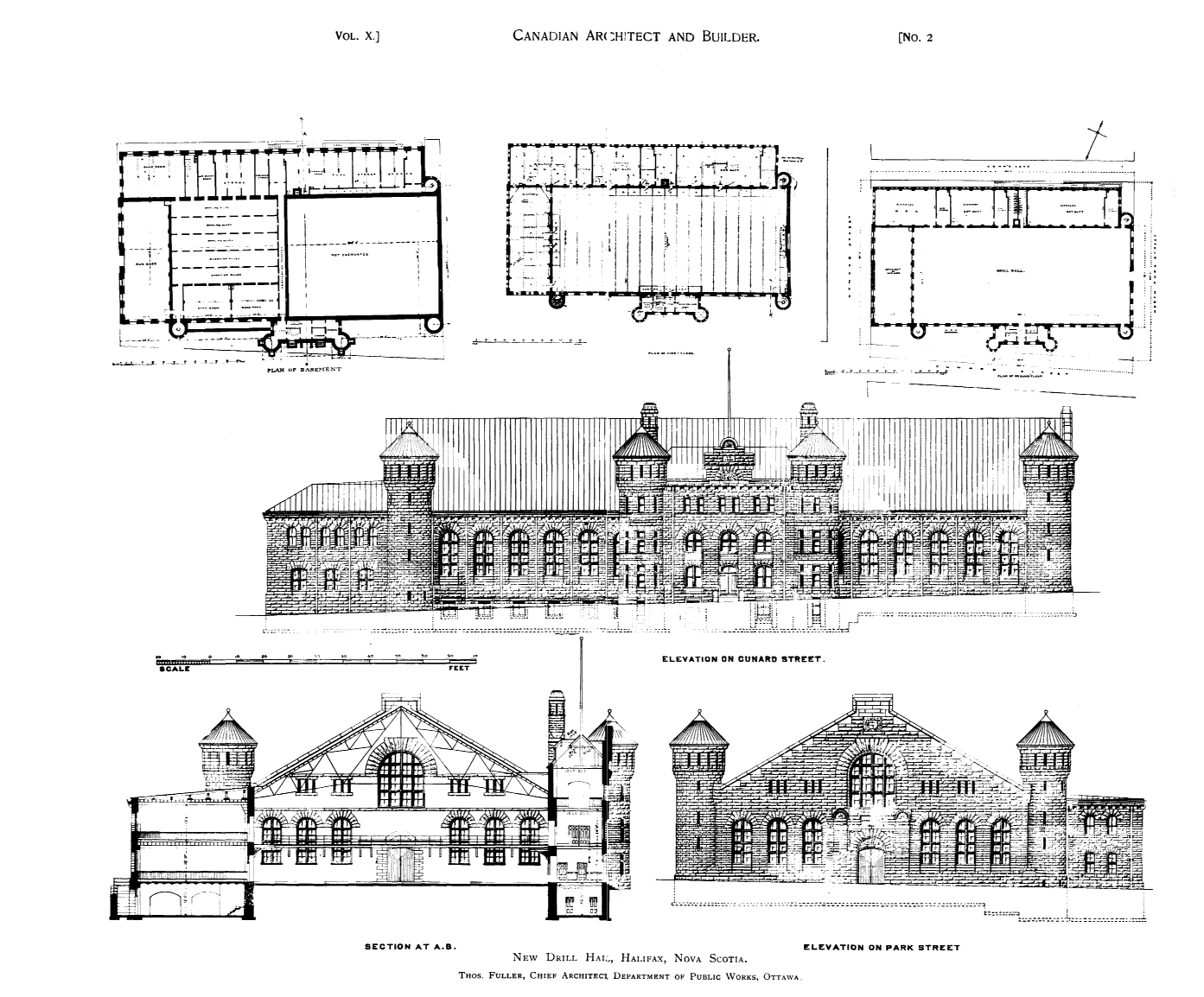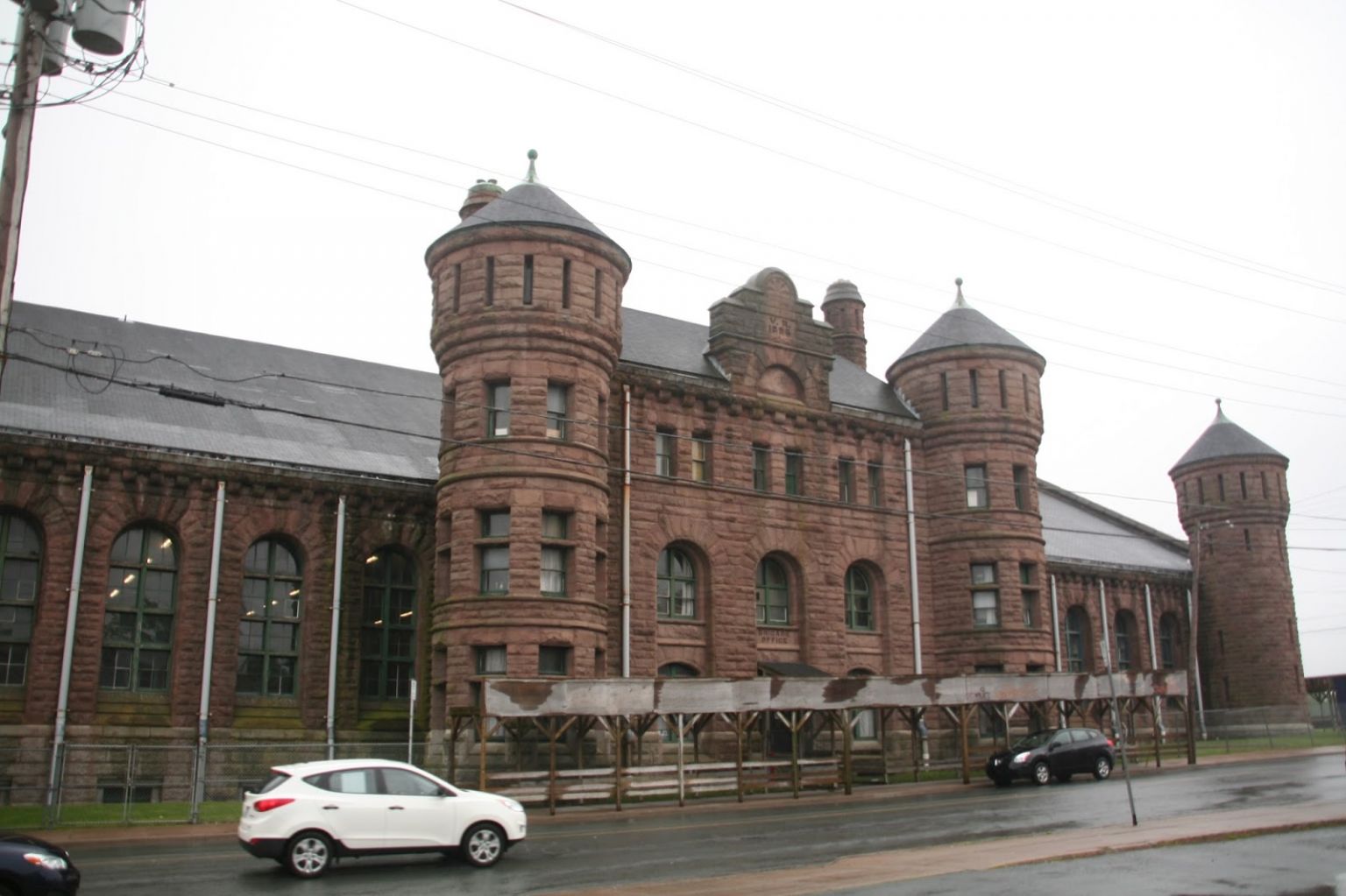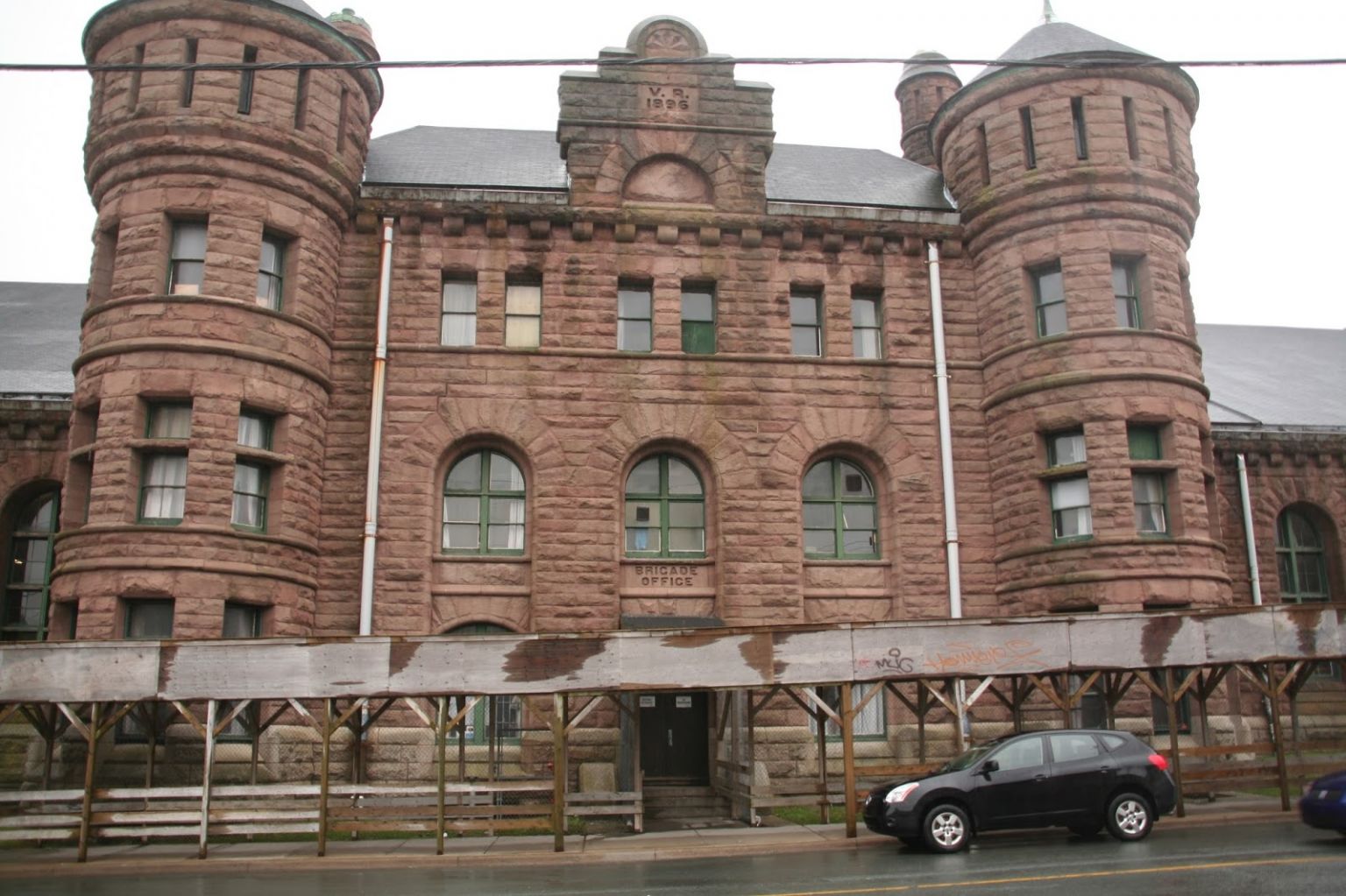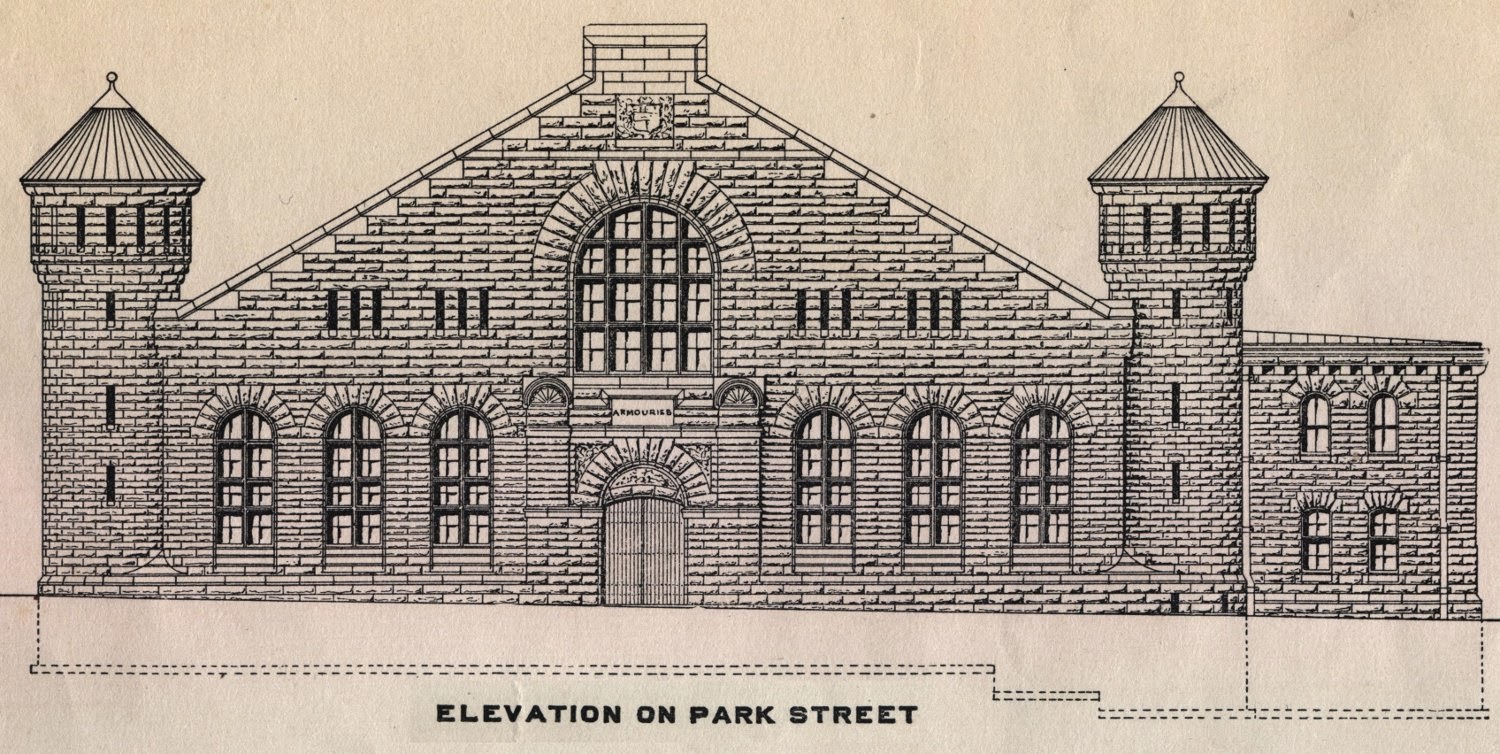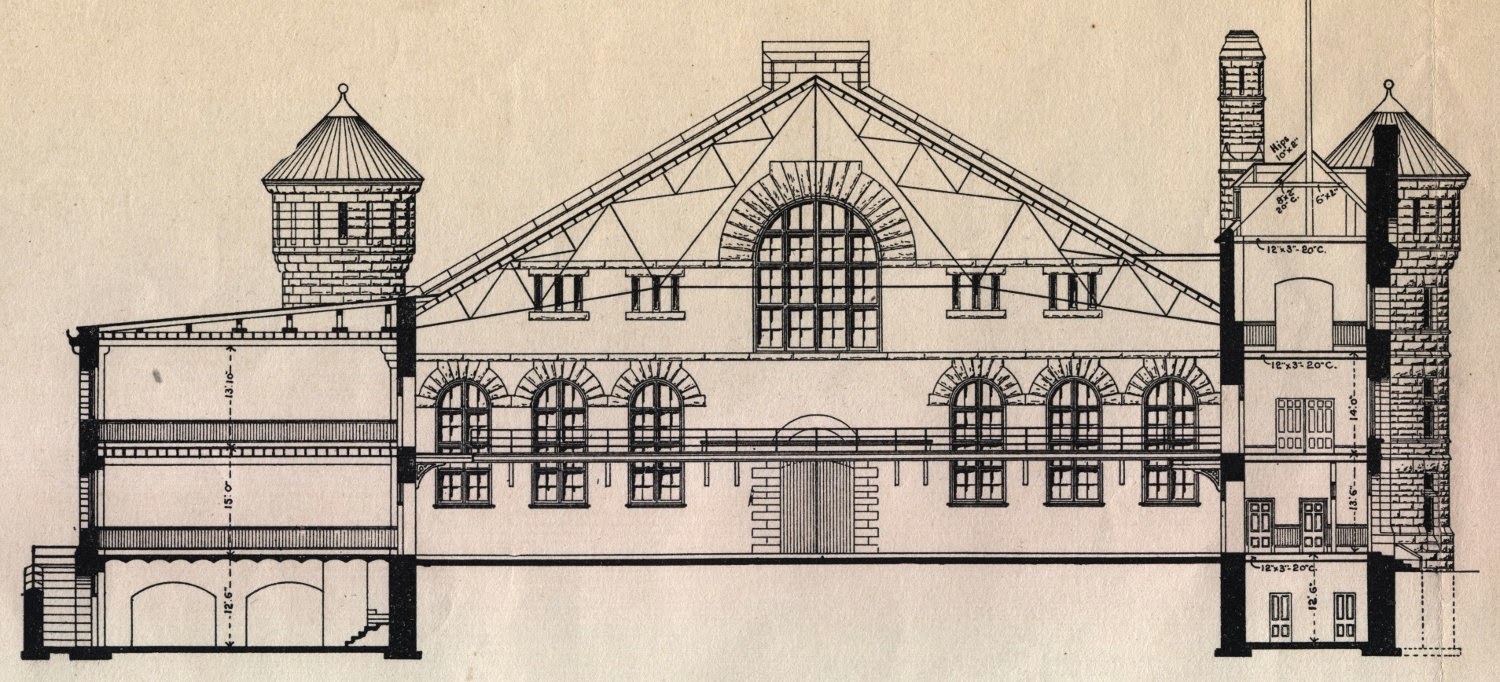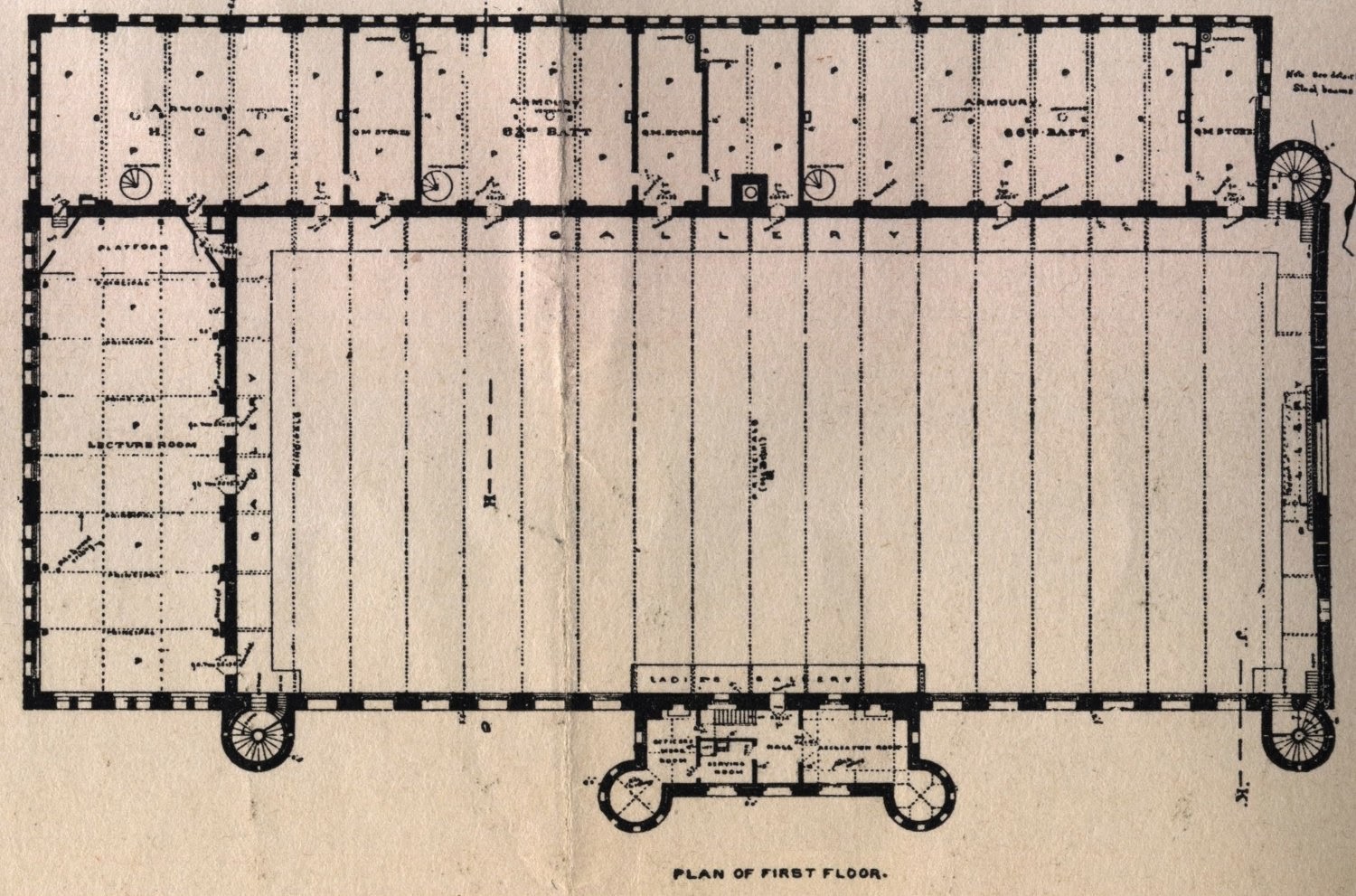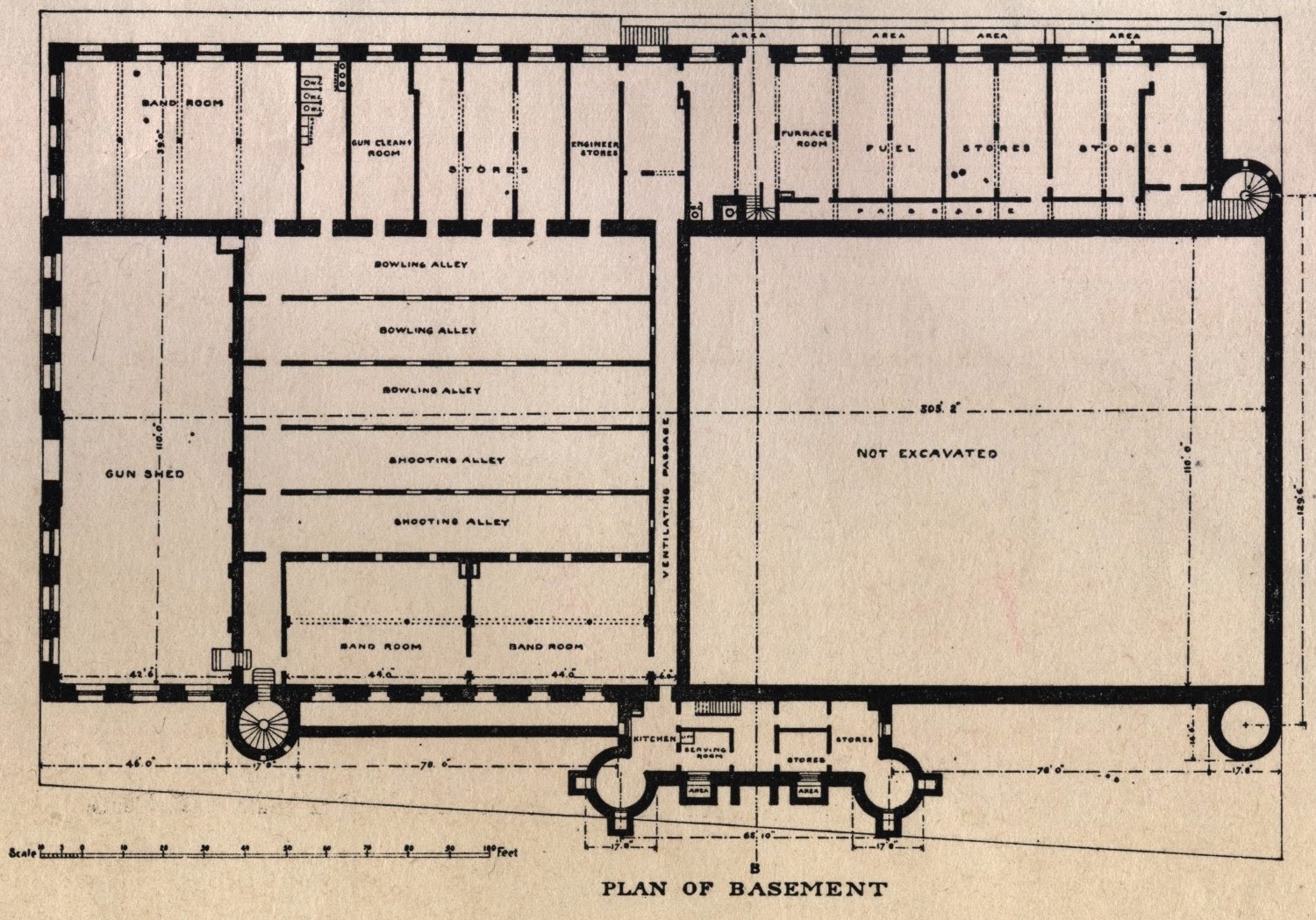Drawings from Canadian Architect and Builder, Feb 1897 showcasing the new building to the rest of Canada.
 |
| Ottawa’s Cartier Square Drill Hall |
Drill halls presented a long standing architectural problem – The need to span a large uninterrupted
open space. Previous Drill Halls in other cities had been built with wooden roof trusses. These limited the available span, or when daring and ambition were used, collapse resulted. The earliest surviving example of a drill hall with wooden trusses is the Cartier Square Drill Hall in Ottawa. The Wooden trusses span 75′, whereas the Steel trusses in the Halifax Drill hall allowed an open SpanB of 110′.
The building is styled in aB Richardsonian RomanesqueB style. Fuller Built in Several Styles – His Gothic Revival Parliament Buildings and Second Empire style Langevin Block in Ottawa are best known;Fuller also Designed a number of smaller government buildings, including the Baddeck Post Office and Custom House, Opening in 1886 was also doneB Richardsonian RomanesqueB style.
(Top) elevation from North Park Street ( above and below) elevation on Cunnard Street
Fuller was also the initial architect on the New York State Capitol builing in New York, however was replaced when costs continued to climb. He was eventually susceeded by Henry Hobson Richardson, who is the founder of the the Richardsonian Romanesque style.B Richardsonian Romanesque is characterized by asymmetrical forms, round towers,B stringcourses (Prominent horizontal bands of stone that stick out from the side), corbelled banding (particularly in the towers, where the narrow lower portion transitions to the wider top portion), and deep set multi-pane windows with heavy mullions with wide voussoirs (Stones in curved part of the Arch). B
The drill hall has been home to the Princess Louise Fusiliers and the 1st (Halifax-Dartmouth) Field Artillery Regiment, RCA,B since it was constructed. TheB Princess Louise Fusiliers hold battle honours in the Riel Rebellion, Boar War, Both World Wars and Afghanistan. The 1st Artillery served as a home defence unit, providing anti-aircaraft support during both world wars.
UPDATE:
The Regimental Rogue Offered two posts with much better scans of the above floor plans and Elevations. I Have included them Below.
B







